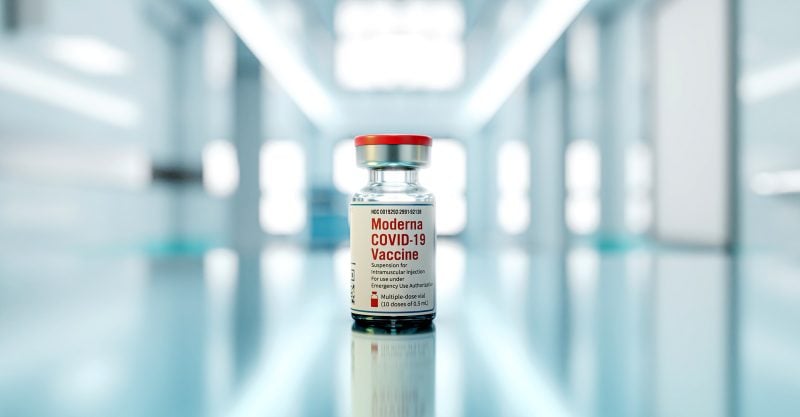Miss a day, miss a lot. Subscribe to The Defender's Top News of the Day. It's free.
On Jan. 13, California health officials issued a hold on 330,000 doses of Moderna’s COVID-19 vaccine after “fewer than 10” people at San Diego’s Petco Park stadium vaccine clinic suffered allergic reactions to the vaccine. Santa Clara County officials lifted the hold on the vaccine lot in question on Jan. 21.
One day later, on Jan. 22, the Centers for Disease Control and Prevention (CDC) issued a Morbidity Mortality Weekly “early release” report on Moderna’s COVID-19 vaccine. For the report, the CDC used data reported to the Vaccine Adverse Event Reporting System (VAERS) between Dec. 21, 2020 – Jan. 10, 2021 to investigate cases of anaphylaxis, a life-threatening allergic reaction, following injections of Moderna’s vaccine.
The CDC’s choice to use VAERS data to calculate the rate of anaphylaxis associated with Moderna’s vaccine is idiosyncratic and troubling. Why?
First, VAERS is a “passive” reporting system, which results in a high degree of underreporting. In fact, a 2010 study (Lazarus et al, 2010) commissioned by the CDC, concluded that “fewer than 1% of vaccine injuries” are reported to VAERS. A 2015 study (Shimabukuro et al, 2015) similarly concluded that vaccine adverse events are underreported.
The other problem with VAERS? Reports often get filed only weeks or months after the event, which means the data is not current.
There are other reporting systems that the CDC could have used to calculate anaphylactic reactions to Moderna’s vaccine.
For example, the Vaccine Safety Datalink (VSD) data, which the CDC used to calculate its overall rate of 1.3 events per million doses, updates in real time. So does the V-safe database, which was created specifically to assess the safety of COVID-19 vaccines. V-safe sends text message prompts to vaccine recipients on a daily basis for a week after a person is vaccinated, and occasionally thereafter. The prompts urge vaccine recipients to report any side effects directly using a cell phone app.
CDC notified the public of six cases of anaphylaxis following Pfizer’s COVID vaccine during the first week of the vaccination program. Its information came from the V-safe active surveillance data.
Both the Vaccine Safety Datalink and V-safe are considered “active” surveillance systems, sensitive for identifying events and fit for calculating event rates in a vaccinated population. However, unlike VAERS, neither systems’ contents are available for public scrutiny.
CDC’s Jan. 22 report on the Moderna reactions surprisingly asserted that “reporting efficiency to VAERS … is believed to be high,” and “VAERS is likely sensitive at capturing anaphylaxis cases occurring after COVID-19 vaccinations.”
The only reference cited to support these assertions was a 1995 CDC publication on VAERS, written by the CDC’s own scientists — which instead of supporting the CDC’s Jan. 22 assertions, contradicted them.
Just like the 2010 Lazarus study, the CDC’s 1995 report found that less than 1% of certain serious adverse events were being reported to VAERS. The report, which didn’t mention anaphylaxis, also “highlight[ed] the limitations of passive surveillance systems in assessing the incidence of vaccine adverse events.”
In fact, according to the VAERS website: “It is not possible to use VAERS data to calculate how often an adverse event occurs in a population.”
Notwithstanding these extraordinary impediments to relying on VAERS to calculate any adverse event rate, CDC found 108 potential episodes of anaphylaxis following Moderna vaccinations in VAERS, of which only 10 met the Brighton criteria for anaphylaxis. With 4 million doses administered, the CDC calculated a rate of 2.5 anaphylaxis events per million doses — still double the accepted average rate for vaccination.
Pfizer’s vaccine has also been associated with higher-than-expected anaphylaxis events. By Dec. 19, 2020, after only a few days of use, the CDC had confirmed 6 cases of anaphylaxis among 272,000 vaccine recipients, or 22 cases per million doses. This is also considerably higher than CDC’s expected rate of 1.3 per million cases of anaphylaxis following vaccination.
CDC had promised it would have five adverse event monitoring systems at work at the onset of the COVID-19 vaccination program, and it would add six more systems later.
Yet V-safe is the only one of these systems currently in use that provides active surveillance. As such, it is the only one from which adverse event rates can be reliably calculated. The CDC should have used V-safe to calculate the anaphylaxis rate associated with the Moderna vaccine — but it didn’t.
If the CDC were desperate to improve the appearance of Moderna’s COVID-19 vaccine safety profile, and release the 330,000 doses quarantined in California, using the VAERS data — and hoping no one would notice — was probably the best option.
If the CDC wants to cultivate trust in COVID vaccines and reinstate trust in vaccine injury monitoring, it’s essential that it make public the best, most accurate data — data the CDC has had all along.






